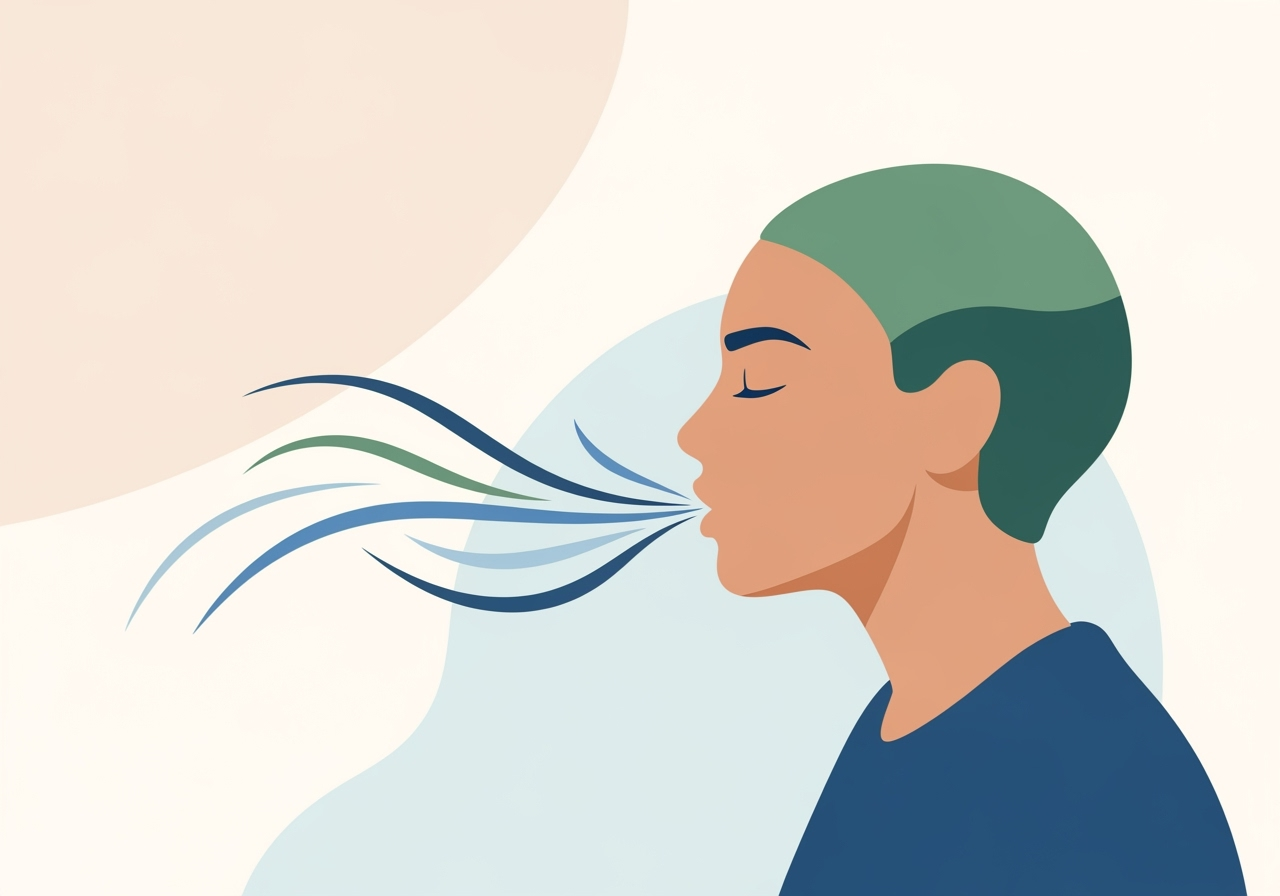Are you plagued by panic attacks? Fear everyone knowing you’re anxious and struggling to breathe? Worried you will end up losing control and collapsing? Maybe you’re even frightened you might die.
But there is a simple little solution to reduce your susceptibility to these attacks. It just needs five minutes practice per day and involves something we do reflexively already – by tweaking how we breathe and how we sigh.
“A sigh isn’t just a sigh. We inhale the world and breathe out meaning. While we can. While we can”
– Salman Rushdie
What is a sigh?
Sighs are a reflex. They play a regulatory role in homeostasis and help us keep our bodies in balance. They are in fact a form of breathing. When we breathe we are trying to balance the ratio of oxygen and carbon dioxide in the brain.
Inhalation allows us to take in oxygen whilst we offload the excess carbon dioxide when we exhale. As we inhale, the oxygen passes from our lungs into our blood stream where it is delivered to each of our organs. Carbon dioxide then allows the oxygen to be released into our cells and tissues.
Sighs occur periodically in both animals and humans and have a different impact on the body to eupnoeic (normal) breathing. As a reflex, it’s our bodies way of offloading any excess carbon dioxide. But there’s an optimum sigh rate of 12 spontaneous sighs an hour. If you’re sighing more than this, it may indicate you’re experiencing an underlying physical health condition such as a respiratory condition.
How does sighing relate to our mental health?
Sighs also play a role in the expression and regulation of our emotional states. We perceive sighing as a symbol of distress. And in fact, sighing can indicate you’ve experienced a trauma or are stressed. Occasional sighs indicate healthy, normal management of our emotions but excessive sighing may be a sign of feeling overwhelmed.
People with anxiety disorder, panic disorder and PTSD sigh more frequently than healthy controls when sitting and resting and may sigh at greater levels than homeostatic need. For people with phobias, exposure to the phobia led to increased sighing. In people with rheumatoid arthritis and in those with traumatic brain injury, those who were depressed also sighed more.
Can sighing be part of the solution?
Sighing can also facilitate relief. Spontaneous sighs not only reduce respiratory tension and discomfort but can help with shortness of breath and feelings of restlessness. We can get even greater respite if we take charge of our sighs.
People with anxiety often start noticing their anxiety is increasing and things can quickly spiral into full on panic for some. But research from Stanford University found that use of a particular pattern of sighing known as the cyclic physiological sigh, can head a potential panic attack off at the pass.
Physiological sighing is simple; simply take a big inhale and then a second inhale to top it up and ensure your lungs are full before taking a long exhale.
Andrew Huberman demonstrates physiological breathing in this video.
In one randomised control study (involving Huberman) cyclical physiological sighing was compared with two other forms of breathing exercises – one which emphasised inhalation and another which involved equal breaths in and out. Cyclic physiological sighing performed best. There was also a control group who simply observed their breath as they meditated. Each healthy volunteer was asked to practice their assigned breathing style for 5 minutes a day for a month.
Hundreds of studies have demonstrated that mindful meditation reduces anxiety. As expected, the control group therefore showed a significant reduction in anxiety at the end of the month. But those who had practiced controlled breathing showed even greater reductions which increased as the study went on suggesting that establishing a daily breathing practice is important if you want to see lasting benefits.
Those who had been assigned to the group practicing the cyclic physiological sigh showed the greatest improvement of all and the improvement continued to grow the longer period they practiced it. The researchers reported that at the end of the study, all those practicing cyclic physiological sighing had a reduced heart rate throughout the day and a more elevated mood. They improved their sleep, they felt more relaxed and reported less stress.
Huberman paper: https://www.cell.com/cell-reports-medicine/fulltext/S2666-3791(22)00474-8
Why not take five minutes a day to practice?
Attack panic. Breathe a sigh of relief.
If you’re someone who suffers from panic attacks, the video above from Andrew Huberman is a great way to learn how to take control of your breathing through the simple technique of cyclic physiological sighs.
Research involving Huberman found that this approach out-performed two other forms of controlled breathing (as well as a control group who were observing their breath in mindful meditation). When performed daily for 5 minutes, those practicing cyclic physiological sighs showed a reduction in stress and panic, improved sleep and elevated mood.
You can read more about the benefits of sighing in a post I wrote on my Help to Heal Substack.

